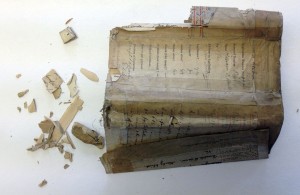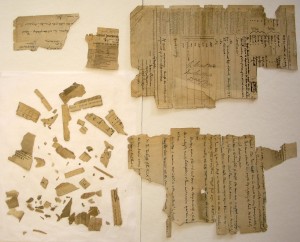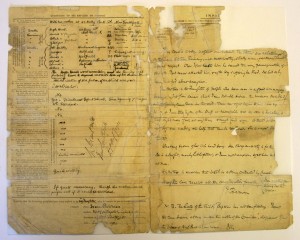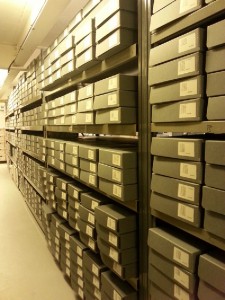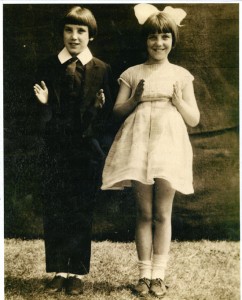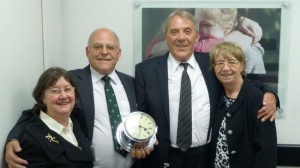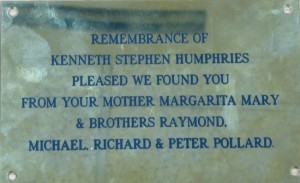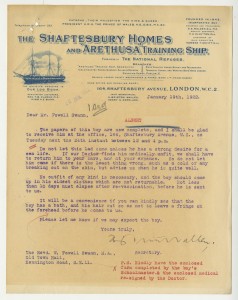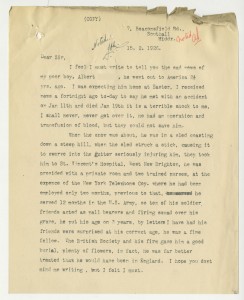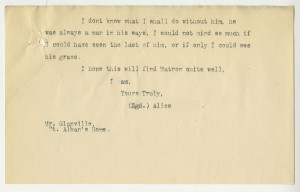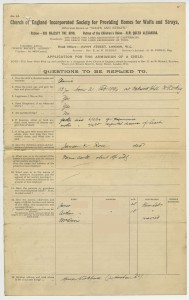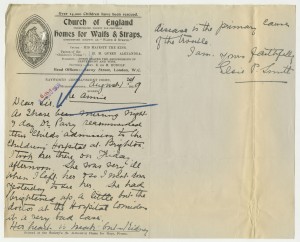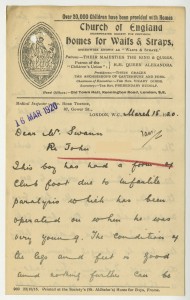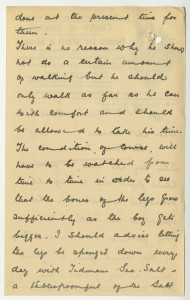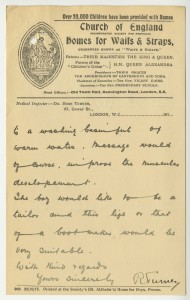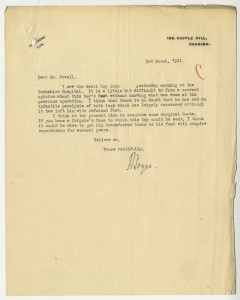Another in the series of our blogs, written by one of our volunteers, Rod Cooper, that takes a look at The Children’s Society Archive’s children’s case files – in particular the case file of Frederick Fleet, who was most famously known as one of the lookouts on SS Titanic on the evening of 14/15 April 1912.
The following is an account of the early years of Frederick Fleet during the period of his care under the auspices of Church of England Central Society for Providing Homes for Waifs and Strays (The Children’s Society).
Born on 10 October 1887, the illegitimate son of Alice Fleet and Frederick Laurence – parents of whom he would have, respectively, little or no contact – Frederick Fleet was little more than two years old when, in December 1899, he was placed into the care of the Liverpool Foundling Hospital. He would remain there for three years.
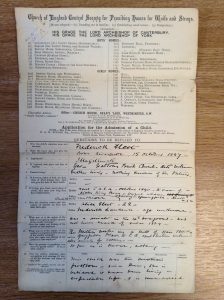
First page of Frederick Fleet’s application form to the Waifs and Strays Society
During his time at the Hospital it appears that his mother did – though somewhat irregularly – contribute small payments towards his upkeep and maintain a regular correspondence with the Hospital’s matron. The documents retained in The Children’s Society’s Archive also indicate that Alice Fleet may have intended to continue making contributions on her son’s behalf in the future, and wished to maintain her claim on him and eventually provide him with a home. Regardless of these intentions, however, the bond between mother and child was seriously weakened – if not severed for good – when she departed Liverpool for the USA in October 1890, and sought a better life with a sister living in Springfield, Massachusetts.
Frederick remained at the Liverpool Foundling Hospital for three years, during which time the Hospital encountered its own problems relating to inadequate funds and the prospect of closure. In respect of Frederick – and as an alternative to his direct referral to the local workhouse – this resulted in the submission of an application to the Church of England Central Society for Providing Homes for Waifs and Strays – as The Children’s Society was then known – and his transfer in March 1893 to the Liverpool Diocesan Boys Home, Seaforth. He was to stay at Seaforth and the care of the The Society until shortly after his twelfth birthday in November 1889.
Seaforth’s formal title was Elm Lodge Home for Boys. The home was officially opened in March 1893, and it is likely that Frederick would have been among the initial cohort of residents. The home catered for up to 30 boys, typically aged between 7 and 14 years of age.
Whereas there is little specific documentary information relating to Frederick’s time at Elm Lodge, in general terms the home would have provided him with a relatively stable and safe environment to grow up in. He would have been involved in the daily tasks of maintaining the home – such as working in the kitchen garden and cleaning dormitories – whilst being able to attend the local school and participate in local community events involving the Church. The limited information there is regarding Frederick suggests that he was at times a troublesome child and an occasional cause for concern to his mentors. Of course, care has to be taken in the interpretation of such sources and the temptation to draw general conclusions should be avoided, but what is clear – and most certainly pertinent with regard to Frederick’s future – is that his behaviour did impact on the choices and decisions made on his behalf by those individuals responsible for his placement immediately upon leaving Elm Lodge.
Frederick’s position – and future – became a concern to the The Society in late November 1899, shortly after his twelfth birthday. And in the period of little more than a week, between 23 and 30 November, there was a flurry of correspondence regarding his future. Indeed, at this particular time, his specific circumstances are not exactly clear, though there is evidence to suggest that he was no longer resident at Elm Lodge and had been placed in the temporary care of the “Shelter” for the Liverpool Society for the Prevention of Cruelty to Children.
The first item of correspondence (dated 23 November, 1899) is a postcard written by Beatrice Lockett, the President of the Home Committee, Elm Lodge, Seaforth, to Edward Rudolf, founder and Secretary of The Waifs and Strays Society. It is quite probable that her postcard is in response to an enquiry regarding Frederick, and she states – with some apparent urgency – “We have sent boys both to Tattenhall and Standon [ . . . ] and I do hope he [i.e., Frederick] will be taken at Hedgerley [Court] Farm Home at once if possible.”
The homes to which Beatrice Lockett referred were all run by The Society, and the latter two were ‘industrial homes’ providing agricultural training for their residents; a significant number of which were relocated to Canada upon leaving.
Although Edward Rudolf wrote to the Mrs Henry Stevenson, Honourary Secretary to the Home Committee at Hedgerley, and “urged the necessity of taking the boy,” no record of her subsequent correspondence remains on file. However, on 27 November he opens a correspondence with another home – Tattenhall, in Cheshire – and asks whether the home can receive Frederick. The reply, from Adela Joyce, Honourary Secretary to the Tattenhall Home Committee, is somewhat equivocal. She writes by return and advises that there is “a vacancy at Tattenhall and [we] can therefore receive this boy on trial; but if he is as troublesome as he has apparently been at Seaforth, we shall not be able to keep him.”
Following Adela Joyce’s letter, Edward Rudolf duly wrote to Beatrice Lockett on 29 November with the good news that Frederick could be provided with a place at Tattenhall, albeit for a trial period. At this stage then everything was apparently settled and the questions regarding Frederick’s immediate future were resolved. Edward Rudolf’s letter to Mrs Lockett concludes; “Will you please, therefore, arrange for the boy to be sent direct, and let me know the exact date that he is transferred?”
Yet for all his efforts on Frederick’s behalf, Edward Rudolf received the following letter from Beatrice Lockett, advising that the Seaforth Home Committee had made drastically different arrangements for Frederick:
73, Ullet Road,
Sefton Park,
30th Nov[ember]. / [18]99
Dear [word illeg.] Rudolf
It would not do at all we think for F[rederick]. Fleet to go to Tattenhall, [words illeg.] we have just sent a boy there who gave us a great deal of trouble at Seaforth at the same time as F[rederick]. Fleet did.
Many thanks though for all the trouble you have taken in the matter. My husband has written to the Commander of the ship “Clio” at Menai Straits, Bangor[,] to see if we can get Freddy on that ship. We do not wish him to be on the “Indefatigable” here[?] on account of the days off & he would hang about Seaforth when he had holidays.
He is at present at the “Shelter” for the L’[iver]pool [Society for the] Prevention of Cruelty to Children, & we are naturally anxious to get him placed elsewhere soon.
With kind regards|Yours sincerely|Beatrice G.[?] Lockett
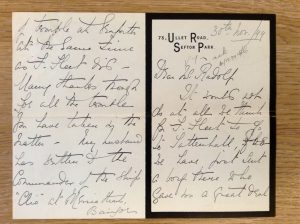
“It would not do at all we think for F. Fleet to go to Tattenhall . . .”
Just what motivated Mrs Lockett and her colleagues to take the action they did, especially when arrangements for Frederick’s removal to Tattenhall were seemingly settled, is unknown. What is clear, however, is that their decision was made with some urgency and in a manner that effectively discouraged opposition. It is tempting to speculate too, given Adela Joyce’s prior knowledge of Frederick’s behaviour at Seaforth, that there was correspondence between the Seaforth and Tattenhall Home Committees considering the suitability of placing Frederick at Tattenhall. While this remains speculation it is entirely clear that the decision made by Mrs Lockett and her colleagues was to set Frederick’s future on a previously unanticipated course.
In a matter of a few short days then, the efforts and involvement of a small number of people, established Frederick’s path towards a life as a seaman and to be name forever associated with the sinking of SS Titanic.
A former Royal Navy corvette, the Clio was an Industrial School Ship moored off Bangor, in the Menai Straits. During the nineteenth century there were numerous such institutions, and they were created to train young boys in seamanship and to prepare them for a life at sea, whether in the merchant marine or Royal Navy. Whilst some of these ships were of a ‘reformatory’ nature, this was not the case with Clio, and many of the 260 boys on board, aged between 12 and 16, were orphans from homes such as Frederick’s in Liverpool.
Whilst undoubtedly receiving valuable training and skills in seamanship, by all accounts life on board was harsh and uncompromising. Beatings and bullying were rife, and the boys were subject to arbitrary and random discipline.
Having left the care of Elm Lodge Home for Boys 1899, little is known of Frederick’s life for the four or so years he spent on the Clio. However, there are two letters in his case file retained by The Children’s Society Archive that clearly indicate that he remained in touch with at least one member of the Home Committee at Elm Lodge; and one who may also have been responsible for securing Frederick’s future with the White Star Line.
Both letters are written by George Killey, the Liverpool Diocesan Chairman and a member of the Elm Lodge Home Committee. The first of these – addressed to Edward Rudolf – is written in the form of a covering letter and it would have enclosed correspondence from Frederick himself. A copy of Frederick’s original letter has not been retained and was presumably returned to George Killey as per his request:
Nov[ember] 15th 1910
My Dear Rudolf,
Here is the case of one of our most difficult boys, I almost despaired of him at one time – I had him trained on board the Clio & have never lost sight of him, & had him up to see me[?], he is lookout man on the White Star Sir Oceanica [1] [and] grown a fine young fellow, 27 [2] years of age – a teetotaller. & he told me he had got £36 in the Bank. Thank God is all I say. Kindly return the letter.
Kindest regards|Yours sincerely|Geo[rge] D. Killey
[Notes:1. George Killey is almost certainly referring to RMS Oceanic. This is clarified in his second letter, below; 2. Frederick Fleet was born on 15 October 1887. He was 23 years old at the time of the letter.]
By April 1912, Frederick was serving as one of six lookouts appointed for SS Titanic’s maiden voyage, and he was one of two on duty on the evening of 14 April when at 11:40 he spotted an iceberg and duly telephoned the bridge with the call: “Iceberg, right ahead!”
Whilst accounts of and details of the sinking of SS Titanic abound and can be better found elsewhere, it is necessary to relate that Frederick survived the sinking and was one of two trained seamen who were allocated the charge of Lifeboat No.6.
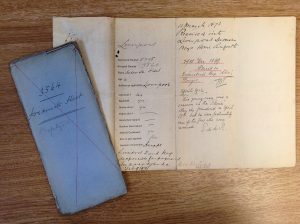
“This young man was a seaman on the ‘Titanic’ when she foundered on April 15th”
Following the sinking, two inquiries were launched; a Senate Inquiry in the United States and a British Wreck Commissioner’s inquiry in Britain (sometimes referred to as the ‘Board of Trade’ inquiry), and Frederick and his lookout colleague – Reginald Lee – appeared as witnesses at both.
George Killey’s second letter – again addressed to Edward Rudolf – comments on Frederick’s participation in the American inquiry and the imminent inquiry in Britain. Again, the letter appears to follow receipt of correspondence from Frederick; “Kindly return all the enclosures.” As with the earlier letter, Frederick’s own correspondence has not been retained and was presumably returned:
LIVERPOOL DIOCESAN BRANCH
19, Commerce Chambers,
Lord Street,
Liverpool
April 30th 1912
My Dear Rudolf,
Sorry you are not with us today. [word illeg.] have awfully busy week. I wanted to tell you about our boy who was saved from the Titanic. I don’t want his name referred to at all, he gave his evidence most creditably before the American Enquiry, but he has still to stand the Board of Trade Enquiry. In next month’s Northern Notes I will refer to the matter but shall not mention Fleet[‘]s name – he has always been an extremely good lad & never failed to keep in touch with me. I got him into the White Star Line 5 or 6 six years ago & I have known from time to time his changes of ship[.] [B]y the P/C [post card] you will see he had no fancy for the Titanic but had to go[.] [H]e was on the Oceanic from March 16th 1908. He is a saving boy & has money put by.
Kindly return all the enclosures.
All good wishes|Yours sincerely|George D. Killey
Aside from a small press-cutting announcing his death in January 1965, George Killey’s letter is the last item of documentation retained in Frederick Fleet’s case file at The Children’s Society Archive.
The specific purpose of this account is to shed some light on Frederick’s early years by drawing on the sources available at The Children’s Society. Consequently it is not necessary to recap the details of Frederick’s life beyond George Killey’s letter above. However, for anyone interested in examining Frederick’s life beyond the events of the Board of Trade inquiry, there are many freely available online sources.
Want to know more?
For sources relating to the history of the SS Titanic, the Encyclopedia Titanica offers a good starting point and contains some biographical material about Frederick Fleet: https://www.encyclopedia-titanica.org/titanic-survivor/frederick-fleet.html
Records relating to all of the projects and homes featured in this blog are held at The Children’s Society Archive:
For information about The Children’s Society Archive’s ‘Hidden Lives Revealed’ web site: http://www.hiddenlives.org.uk/
or you can consult the Archive’s on-line catalogue: http://www.calmview.eu/childrensociety/Calmview
If you would would like to know about how The Children’s Society continues to change children’s lives today, visit the charity’s website: http://www.childrenssociety.org.uk/
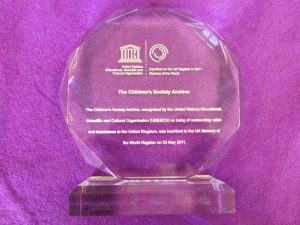

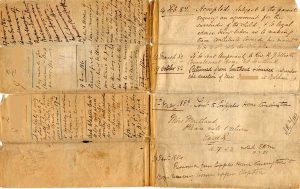
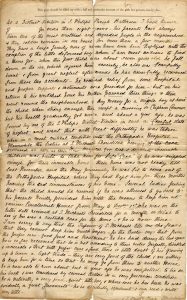

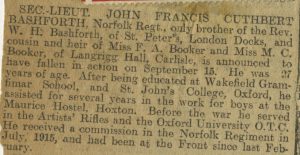
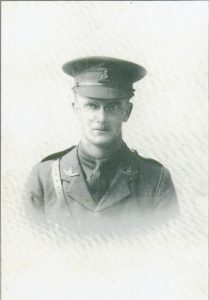



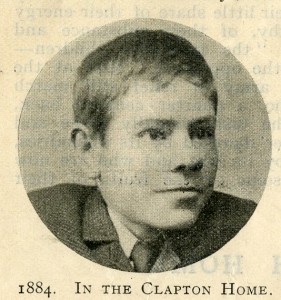
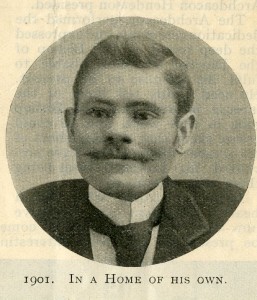

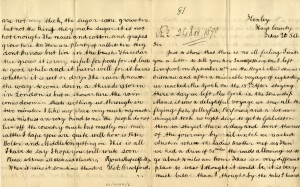
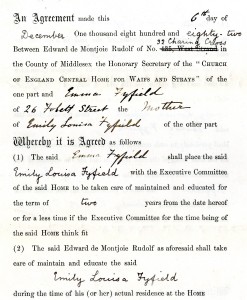
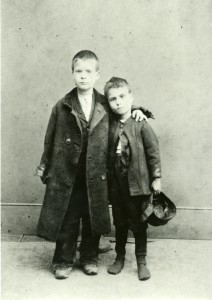
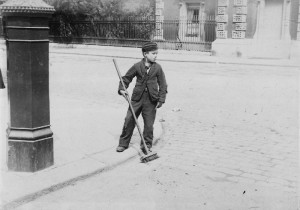
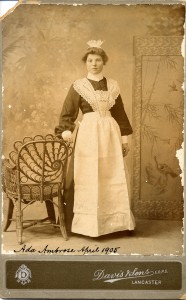
![A boy who was in the care of The Children's Society over 100 years ago. Modern photograph by: Wellcome Trust | Thomas S.G. Farnetti]](http://www.hiddenlives.org.uk/blog/wp-content/uploads/2015/06/C0107829_resize1-300x200.jpg)
